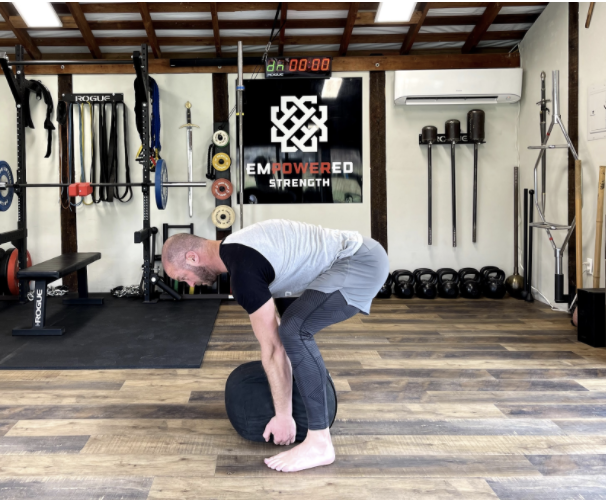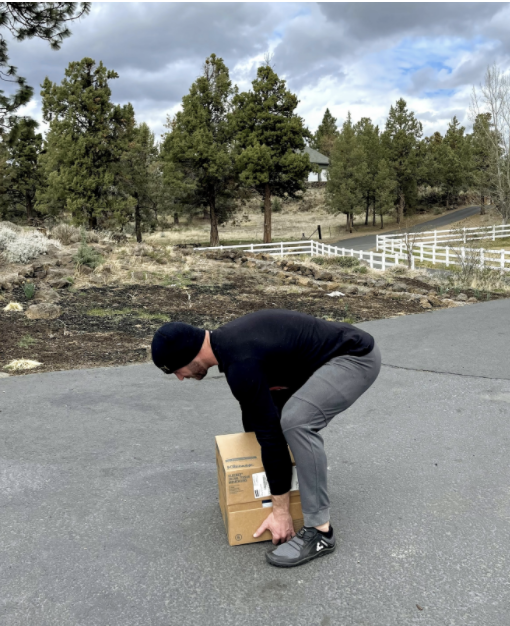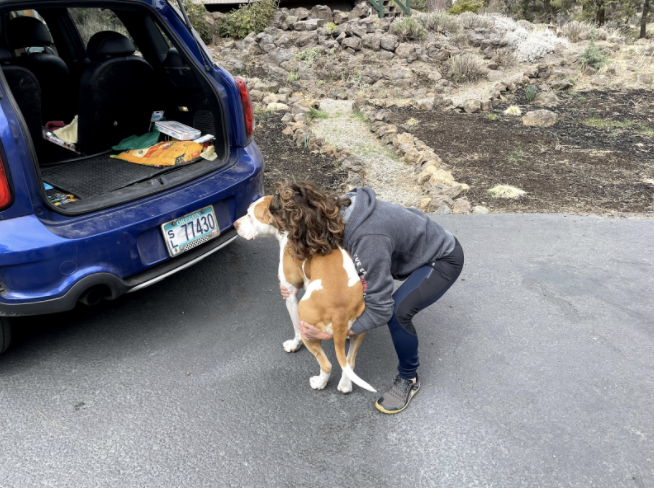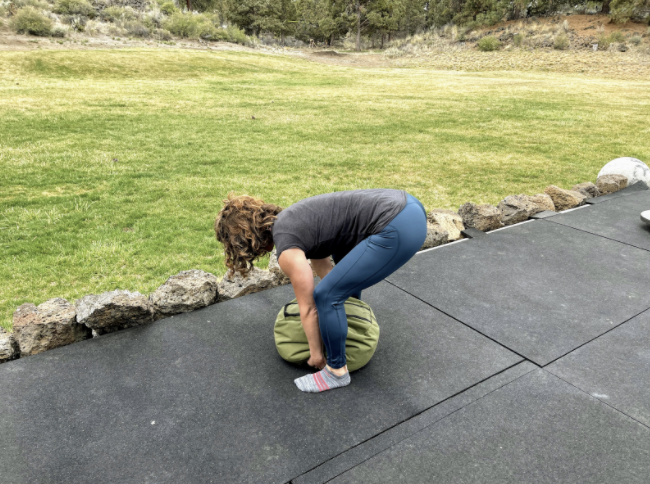A long time ago in a galaxy far, far away people picked up things off of the ground without thinking about it or obsessing about bracing, twisting, breathing, or spine position. They lifted heavy things innately and their bodies were able to reflexively accommodate these requests with relative ease day in and day out. This galaxy happened to be the Milky Way and it was not that long ago on this very planet that we have evidence that this happened often as a necessity to life, especially before modern tools, technology and conveniences.
How do you think the great pyramids or any ancient structures were built? While this truly had to be “back breaking” work, we know that humans were capable of lifting, carrying, and pulling incredible loads day in and day out to complete such monumental tasks or to simply survive. Their historical clues still stand today. Their strength is evident, their fragility is not.

Which brings me to my point about the frailty and movement myths we have created for the people of today. From my experience and observations, if you ask someone to pick up a heavy box off of the ground or better yet, a stone, they will do it with at least a slightly rounded back. So what’s this stuff about “lifting with your legs, not your back”, or “rounding your back will damage your spine”? The need to be ramrod straight and bracing our core tight while being extremely careful with any kind of lifting, especially in the gym has been ingrained in our heads, for many of us, since an early age. This is a myth, or a misapplied notion at best. Let’s take a look at where this started and see if we can dispel or at least bring clarity to the myth of neutral spine.
Personally, I have suffered from low back pain on and off since early high school when I first entered the weight room and began squatting heavy loads. I was really a mess all through high school and weightlifting was not kind to my body even though I had decent coaching and a fairly smart approach. I had some gaps in my strength, I was missing some critical training and life tools.
I first heard about the term “neutral spine” and “bracing” at a conference in 2003 where new research and theories were being discussed by a spine biomechanist named Dr. Stuart McGill, aka “Dr. Spine”. McGill’s work was very intriguing to me and I adopted his “Big 3” exercises and introduced these concepts to my fellow clinicians at the physical therapy clinic where I worked at the time. We all found the methods to be very effective and refreshingly simple to brace and stabilize our spines, then add more complex strength patterns to our bodies. So, I did all of my “core” exercises with a braced, neutral spine and I became a “master bracer” where nearly everything I picked up or moved was done with intention and a focus on staying in a tight, neutral position. I became really good at this, I probably even braced and stabilized to pull my car door open!

Unfortunately, I was only training myself into a position of stability that was not really natural or common in everyday life, at least for extended periods of time. It was also extremely conscious, meaning not very energy efficient and not very forgiving to the absent minded…
So, I became very flexion intolerant, I was incredibly stiff and nearly unable to pick anything off the ground with even a slightly rounded back. Twisting motions were also very challenging and I always felt tight in my mid back and shoulder too. I had trained myself to get into a squat with a straight back to pick something up and I always cringed and suffered if I had to lift an awkward load. Even leaning out over the hood of the car to change my battery would cause me grief and pain. I was only “functionally” strong when I was in the weight room, braced in a neutral spine position. Otherwise, I was out of luck and had to really fight for it or skip activities altogether sometimes.
Fast forward a few more years with lots of training “mileage”, I suffered a major low back injury after my first year as a professional Scottish Highland games athlete. This time I had fully prolapsed (blown) two discs and I was having numbness and tingling down my legs with extreme stiffness and soreness. I was virtually in pain all the time. Trying to throw and keep up my weightlifting was an exercise in futility. After a great deal of soul searching, physical therapy, and chiropractic care I was able to reach a functional level of pain management and movement, but I knew something was still missing. I was only strong and able to move well while throwing, and I became relegated to doing a very limited number of activities outside of the weight room.
If I had to move outside of my comfort zone I usually felt a twinge of pain and had to retreat back to my safe, familiar movements. Fortunately, after my own extensive research and creative movement practice, I found both the StrongFirst and Original Strength systems. They integrated really well with one another. Pressing RESET and using kettlebells created a great bridge from my familiar braced, tight, strict movements to a more playful, restorative, athletic approach to training and life. In the Original Strength System we simply call this owning our “X” and reclaiming our “reflexive strength”.
The point is, I tied myself back together, reflexively, and I became really strong outside of the weight room without fear of moving into injury and pain. I found freedom in my strength. As a teenager in highschool, I had lost some of my reflexive strength and natural athleticism due to sitting at a school desk for over six hours a day. This is likely what caused my back pain for so many years. You can read more about my evolution back to the Highland Games that lead to a National Championship and a handful of World Records here on the Originalstrength.net site.
So, whether you have already hurt your back in some way like me or you have fear around the potential risks of moving, I’ve come to conclude that the worst thing you could do is NOTHING. Whether out of fear of hurting your back, general lack of effort, or confusion about where to even start, doing nothing will only assure you will stay in the dysfunctional “pain cave” or become very limited in your function and weak in all ways.
We are made to move often, and we have a beautiful, natural design that doesn’t require extremely rigid postures. We are also made to be strong, and we must be strong. The research is very clear that weak, deconditioned people get hurt the most. Research also shows that low back muscles become atrophied within days of disuse. Bed rest after injury is not the answer, it’s bad for just about everything after more than a few days.
Aside from doing nothing, the second worst thing you could do is to always be impeccable with neutral spine lifting in life situations, or only performing strict, traditional strength training like bench pressing, squatting and deadlifting. These lifts will leave you vulnerable to attack in every sense, whether on the battlefield, playing field, or simply playing with the dog. How many times have you heard someone say, “my back just went out,” while usually doing something simple like bending over to pick up a sock on the floor? Hint: It doesn’t just “go out” and your back isn’t “in” or “out”, this type of injury is likely a symptom of long term issues.
We do need to be able to find and use our strong, natural, neutral range most of the time as Dr. McGill suggests. However our bodies will be best served by intentionally training at odd angles and positions, slowly and intentionally with a progressive plan – a plan with some wiggle room for fun and random variety along the way. Basically, we need to be able to move and train in a controlled risk environment and rebuild our “reflexive strength.” This requires listening to our bodies and doing these lifts with progressive loads and lower volume of work, from my experience.


Strength is alway a skill, but it’s also a necessity. Ultimately, we all need to be able to take out the garbage or carry a heavy box up a flight of stairs to be useful, happy humans. And, we should be able to do these things without a care or concern for our bodies.
“If you think lifting weights is dangerous, try being weak. Being weak is dangerous.”
-Bret Contreras, PhD
World Record 630lb Atlas Stone Lift by Tom Stoltman (lift starts at 2:22 of the video)>> https://www.youtube.com/watch?v=FqEKgmnbbl0
4 Steps to Get Out of Spinal Lockdown
Here are some specific steps to restore your strength and get you out of the dreaded neutral spine lockdown:
FIND YOUR NATURAL, NEUTRAL POSITION AND WORK IT
This doesn’t have to be overly complicated and a good coach can be a godsend to help get you aligned if you don’t own this already in basic patterns like squats and deadlifts, or bird dogs and side planks (2 of the “Big 3” I mentioned above from Dr. McGill). Generally, most people can work concurrently with #2 below. This will keep you from becoming stiff and limited like I was. The “Get Up” or TGU exercise is a great base to show you can control your linkage from ribs to hips in a strong controlled fashion and is a gold standard in my book to break free of traditional weight room strength limits.
START SLOWLY WORKING INTO ODD ANGLES IN LOW THREAT ENVIRONMENT/UNLOADED
Start simple and light. Getting on the ground while using your own bodyweight is incredibly useful and empowering. My favorite exercise for this is cat/camel, then work into resets like rounded back rocking, cross-crawls, and down dog crawls (hips high, legs fairly straight). See video below for more details.
HAVE A SOLID STRENGTH BASE AND WORK THE CORE IN ALL PLANES OF MOTION
You need a solid “weight room strength” and general conditioning base to optimize performance and reduce injury risk.
What does this mean for strength baselines?
While I’m not as firmly set on specific numbers in the weight room these days, it still very useful to have some good foundational low barrier baselines that should be considered essential for safety and optimal performance before doing loaded stone lifting or other “odd lifts”:
- Barbell or (better yet kettlebell) squat and deadlift with bodyweight
- Ability to hold a plank for 1+ minutes
- Crawling off the knees with head up, hips fairly level and good nose breathing for 2 min
- At least 1 tactical style strict pull-up and/or bent-over row with at least ¾ bodyweight
- Turkish Get Up with ⅓ of bodyweight.
TAKE ACTION AND BE “ODD”
Now you are primed to lift some stones and odd objects! For this, I strongly recommend using “strongman sandbags” without handles to start and as a primary tool for this style of training. The benefits are too numerous to get into here, but I have written many articles about this.
My preference is to have a relatively light bag and a heavy bag to work with for some variety. Most men would do well ordering a 100 and 150lb bags, ladies 50 and 100 are great. These can be underfilled to start then overfilled with more dense material as you get going and build up your tolerance. For more specific program details, support and my new e-book on this style of training, be on the lookout for my Ancient Strength training programming (it’s coming soon).
APPLY THESE PRINCIPLES TO OTHER AREAS
You don’t have to limit yourself to stone lifting either. I strongly recommend connecting with more ancient strength tools like maces, indian clubs, kettlebells, and other odd objects to lift, carry or throw. Just as before, start slow, use common sense and keep the volume relatively low and skill oriented. Please, do not try to do a max lift or high rep conditioning program with a new implement or movement pattern. This style of training is pure gold for an overall anti-fragile, lean, athletic body! When approached sensibly.
Here is a video summarizing these steps to help give you a visual and more details to use too.
Now that we have dispelled some of the myths of the neutral spine, I hope you are on your way to becoming a legend in your own way, whether it is lifting massive stones in Scotland or simply playing with your kids in the yard without pain!
My favorite sandbags bags can be found here: https://projectkratus.com/products/100-lb-strongman-sandbags
You can even use my personal discount code ODIN15 to save 15%
*Special Note: I do not have personal financial interest or ownership in this company. I have used them for years and have found them to be extremely durable, so I’m confident they will work well for you too. Rogue and several other companies make high quality bags and well, but the cost is slightly higher.

ABOUT THE AUTHOR:
John Odden is an experienced strength coach and Original Strength Certified Professional, and a Highland Games World Record Holder based out of Bend, Oregon.
Since he was a child he has been fascinated with improving his health, fitness and athleticism. He was a tall, skinny, awkward kid growing up who always lacked confidence, especially in the gym. Unfortunately, some misguided enthusiasm resulted in chronic back and shoulder injuries that sidelined his athletic career and limited his quality of life well into his 30s. Unknowingly, these injuries and setbacks would be the cornerstone of his passion and unique perspective on how to teach others to live an empowered, pain-free, active life using the strength and movement principles that he has created and honed in his 20+ year career.
John is one of our OSi Online Coaches and has developed both the Crash Proof Course and his newest course, Odin’s Quest: The Journey to Ancient Strength.
LIKE THIS POST?
Then you’re going to want to snag a spot in our upcoming program –
Odin’s Quest: The Journey to Ancient Strength.

- Get Ancient Warrior Strong
- Build New Skills
- Feel Like a Badass
